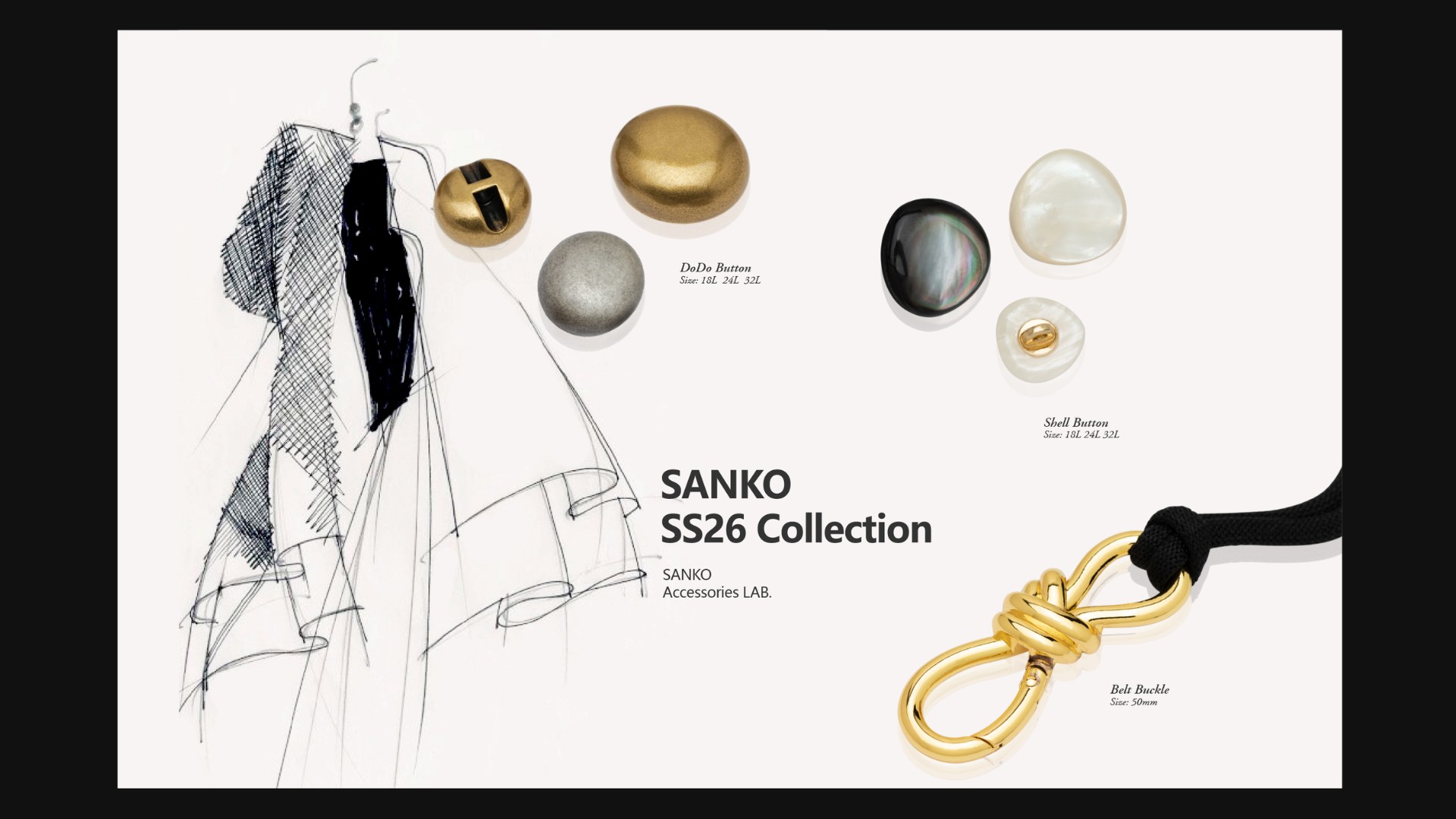Why We Need the Global Recycled Standard (GRS) for Sustainability?
The Global Recycled Standard (GRS) is crucial for promoting sustainability in fashion. It’s an international, voluntary standard that ensures third-party certification of recycled content, traceability, social and environmental practices, and chemical restrictions. For a product to be labeled with the GRS, it must contain at least 50% recycled materials. Companies like SANKO, which use a minimum of 60% recycled materials, qualify for this certification. The GRS aims to increase the use of recycled materials in products while minimizing harmful production impacts.
Objectives of the GRS:
- Unified Definitions: Align definitions across various applications.
- Material Tracking: Track and trace recycled input materials.
- Informed Choices: Equip brands and consumers with tools for informed decision-making.
- Environmental Impact: Reduce harmful production effects on people and the environment.
- Assurance of Authenticity: Ensure that materials in final products are genuinely recycled.
- Innovative Solutions: Encourage innovation in resolving quality issues with recycled materials.
Who Should Adopt GRS in the Fashion Industry?
The GRS is here for brands, retailers, suppliers, and everyone else involved in the supply chain. With GRS standards, both companies and consumers can feel confident knowing that products are independently verified to contain the materials they claim. If you’re a brand or retailer committed to responsibly sourcing fibers and materials, these standards are a great tool for sourcing and communicating with consumers.
Key Areas to Focus on with GRS:
- Verification of Recycled Materials: Confirm materials meet ISO definitions.
- Responsible Production: Adhere to responsible manufacturing practices.
- Chain of Custody: Maintain transparency from recycler to final product.
- Reliable Certification: Ensure credibility through certification.
- Effective Communication: Provide clear and confident information to stakeholders.
- Stakeholder Engagement: Involve all relevant parties in the process.
How to Choose and Audit Sustainable Supplier? A Step-by-Step Guide
Step 1: Obtain Certification from the Supplier
Request certification documents to verify recycled materials.
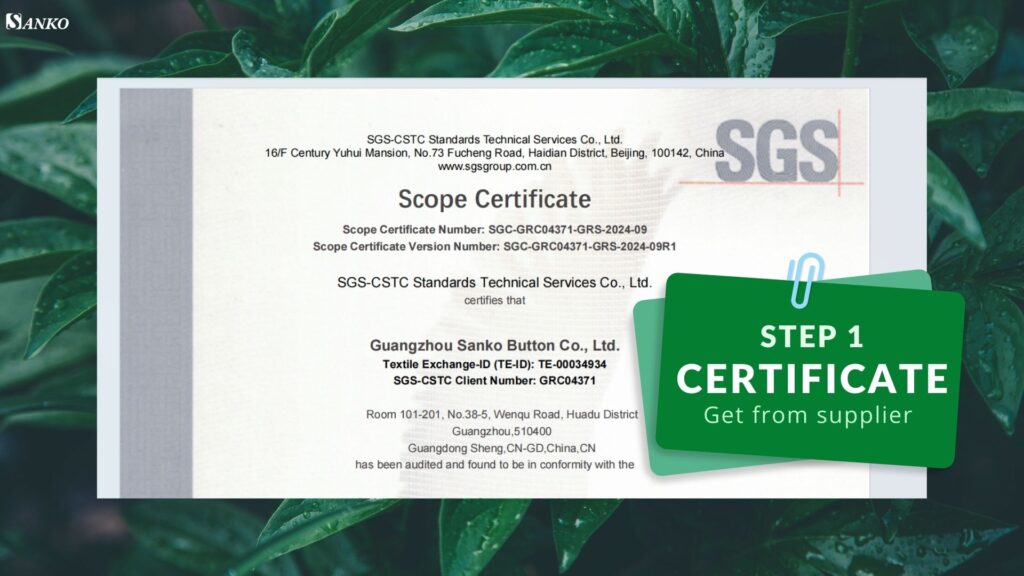
Step 2: Audit Supplier on the Official Website:
Visit the Textile Exchange website and enter supplier information using one of the following: SC Number, Certified Organization TE ID, License Number, Certified Organization Name. Ensure you click ‘ENTER’ before ‘SEARCH’ for accurate results.

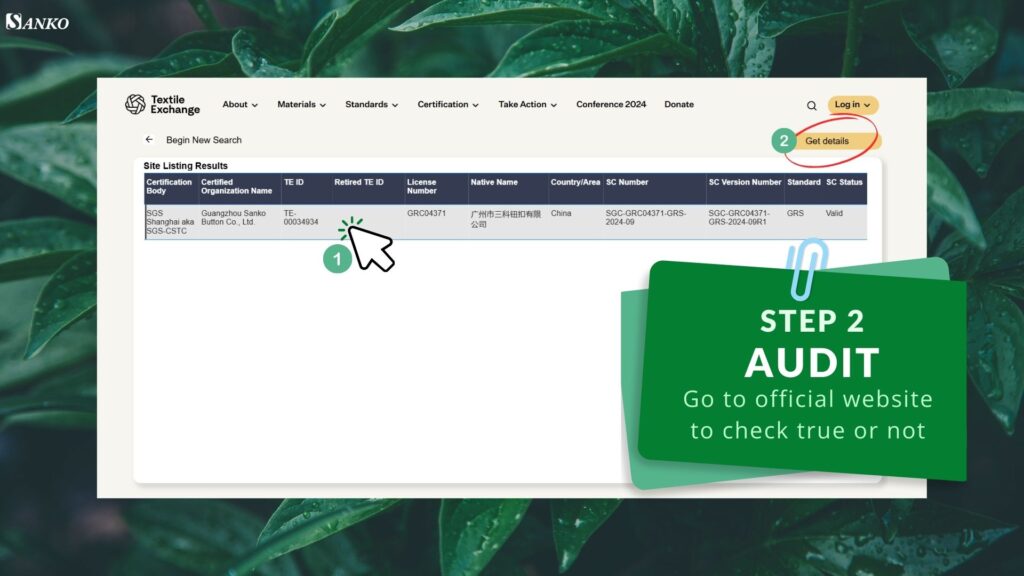
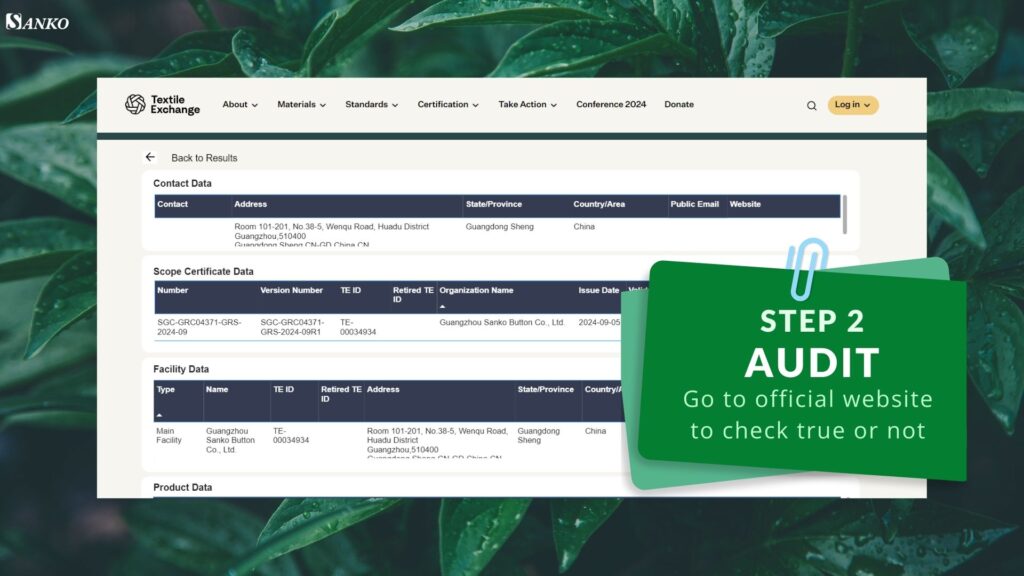
Step 3: Review Certification Details:
Check what the certification covers, including product category, details, and material composition.
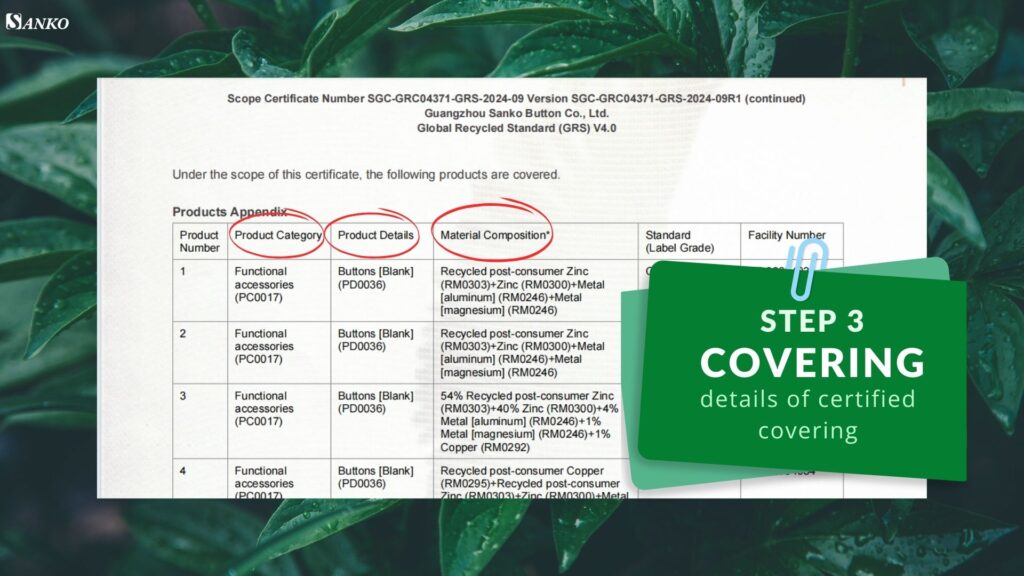
Step 4: Evaluate Cooperation and Contact
Consider the supplier’s willingness to cooperate and maintain open communication.

How Garment Accessories Suppliers Contribute
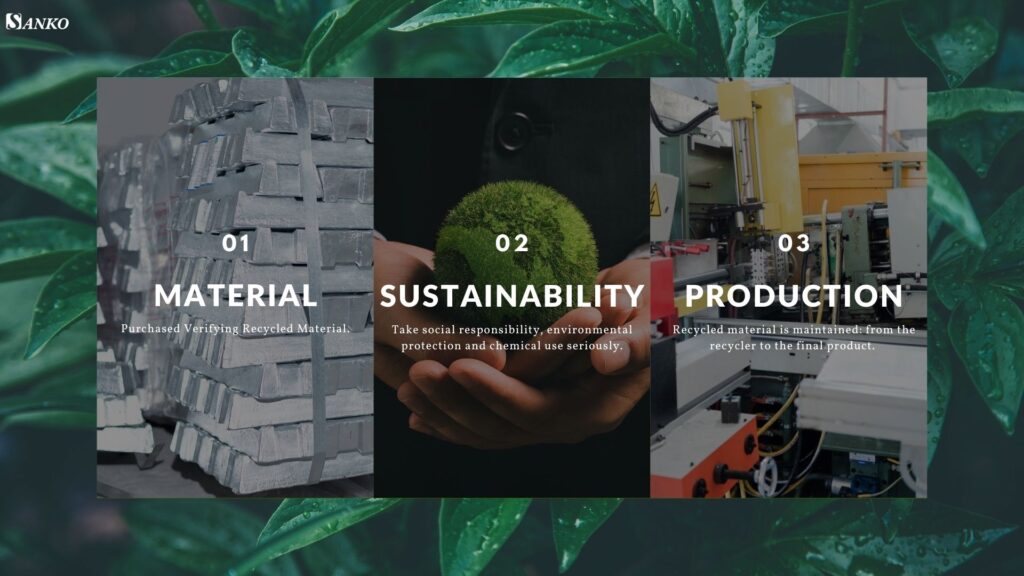
Verifying Recycled Material
Suppliers should ensure materials meet ISO definitions, accepting both pre-consumer and post-consumer materials. SANKO oversees raw material suppliers like zinc alloy, copper, and TPU, focusing on both certification and production process tracking.
Social Responsibility and Environmental Protection
Suppliers must adhere to strict social and environmental requirements, avoiding harmful chemicals in GRS products. SANKO holds ISO9001, ISO45001, and ISO14001 certifications, demonstrating a commitment to protecting the environment.
Full Production Responsibility
Suppliers must maintain recycled material integrity from initial recycling to the final product. This comprehensive responsibility allows products to confidently display the GRS logo.
What’s Next?
By understanding the importance of GRS and how to engage with certified suppliers, brands can enhance their sustainability efforts. For more details or to begin your sustainable fashion journey, contact us today!


